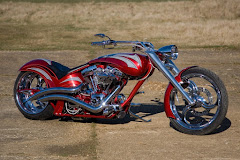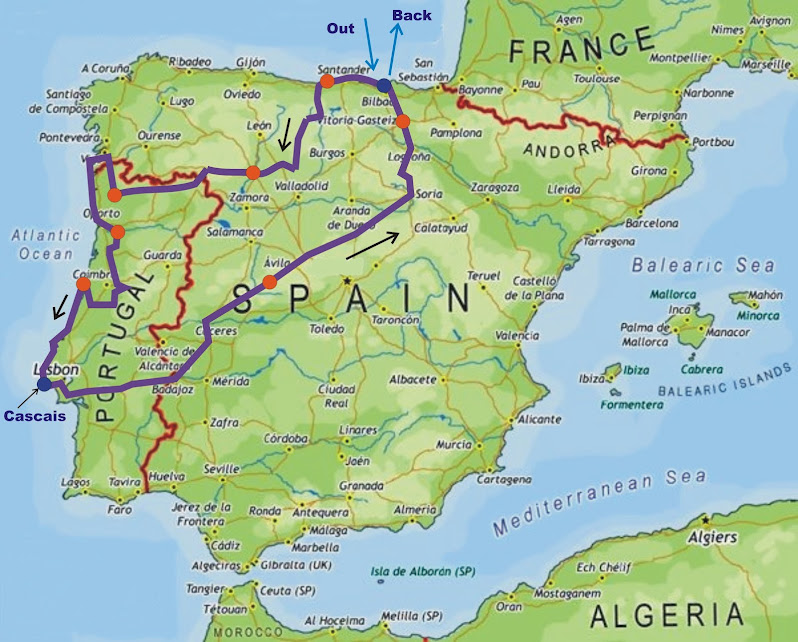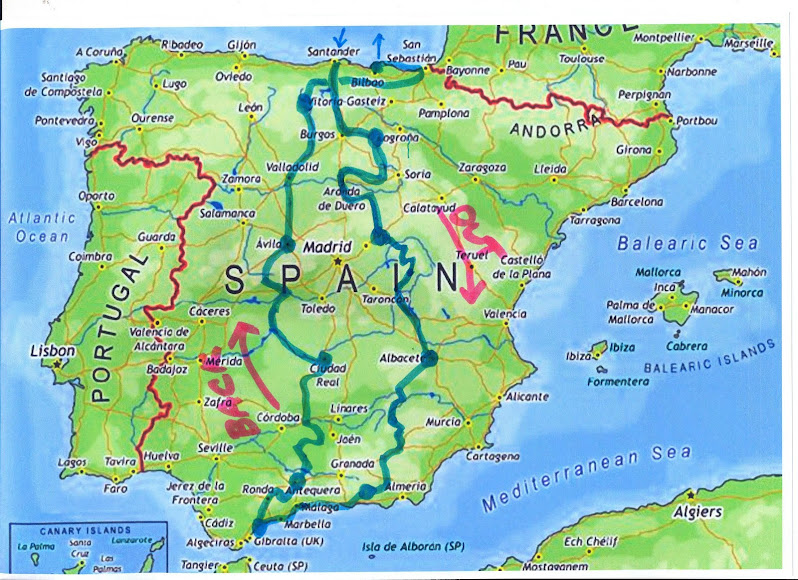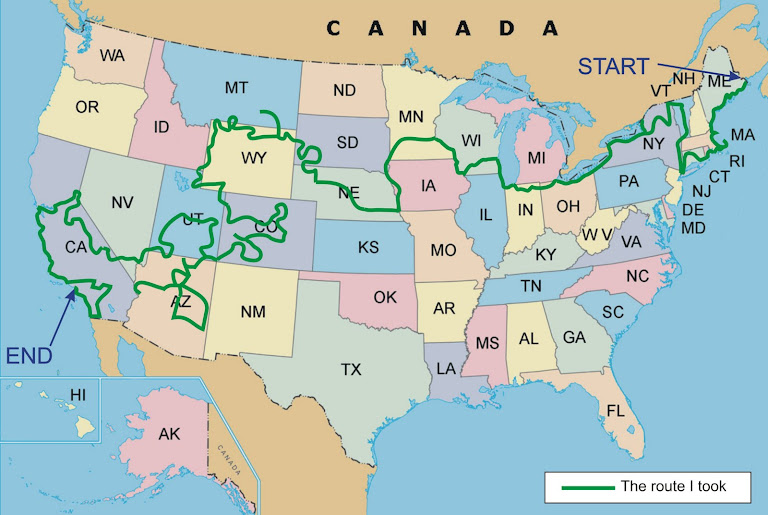I often ride with the Chelsea and Fulham (C&F) Chapter of the Harley Owners Group (HOG). September this year saw the conclusion of my 2014 foreign riding season with a four-day C&F HOG trip to Reims, in France.
The night before we left, we stayed just five minutes from the Channel Tunnel rail terminal in Folkestone. However, this closeness didn't mean all of our group would make it onto the train. One scallywag, who will remain nameless, had a problem with the visa in his passport and knowing the immigration people didn't always check passports on the way to France, he decided to chance it and see if he could travel anyway. He didn't make it as the eagle-eyed immigration officer spotted the error. Gavin (oops) is now going to make sure he gets his visa up-to-date.
Those that did make it were missing Gavin badly.…
The trip was organised by C&F Road Captain Nick Deal. I never knew that Nick was quite so organised. In the weeks before he led the C&F ride to Reims in France, he produced a briefing note, a short lesson on French road signs (I have ridden in France a lot and I did learn something) and gave us options where we could go while on the four day trip. It was impressive stuff, so hats off to Nick. This is Nick with his wife Jane….
The ride down to Reims was in two parts – a blast on the French motorway system through less interesting parts of northern France, followed by great back roads in the afternoon. Under blazing hot skies, we cruised along twisting roads through farmland and seemingly deserted small villages. It never ceases to amaze me when riding through rural France were the people go. Just occasionally we glimpsed a person tending their garden or working on their house, but for the rest of the time, nobody could be seen. Where do they all go?
A break was needed and we rumbled into the town of Bohain-en-Vermandois, famous for being the place where painter Henri Matisse grew up. The quiet ambiance of the town soon became a little louder as we parked our motorcycles in the centre of the town square and re-arranged the café furniture so we could eat as a group. After lunch, the C&F Chapter flag was unfurled, the bikes aligned and a shot of the group taken with their Harleys….
188 miles later on day 1, we arrived at our base for the weekend, in the city of Reims, which is important in French history as it was the traditional site where the kings of France were crowned. More importantly to us however, is its location at the very heart of the Champagne region.
It was a Thursday night and the place was buzzing. Street cafes, bars and restaurants were full with people. It was a good job that Nick had made a reservation at his favourite restaurant, the Grand Café, for our group. Nick and Jane come to Reims often, as evidenced by the warm greeting they received from the waiter (hugs all round). By now, Janet (the partner of the errant passport owner) had arrived having left Gavin to sort out the mess with his missing visa. It would have been wrong to ignore the regions local products, so we tucked into a few bottles of Bollinger champagne as we ate a good meal on the warm September evening.
The next morning, after the obligatory visit to the local Harley-Davidson dealership, we were in for a treat. Between 1926 and 1972, there was a major motor racing circuit called Reims-Gueux and we went to see what was left of this historic place. Built on public roads with permanent facilities, Reims-Gueux hosted 14 French F1 Grand Prix, with the likes of Juan Manuel Fangio, Lorenzo Bandini, Stirling Moss and Mike Hawthorn all having raced here. This video gives a taste of what the circuit was like in its heyday....
A lot of the track, the pits and main grandstand survive today and that was where we chose to park our motorcycles….
I liked the look of the old BP pavilion, so later parked my custom bike Amelia there….
The Chelsea and Fulham HOG Chapter is centred around Warrs, the London Harley-Davidson dealership. Les Channing, from Warrs parts department was on the ride and proudly posed in front of one of the old pits at the circuit…
Les, along with Ken and Dof decided to use the track for the purpose it was built and went for a blast along the main straight. They roared past at just over the speed limit (!) and flashed past the pits just as Geoff Duke would have done in 1955 when he won the 1955 French motorcycle Grand Prix.
On their return run, they came past us a little more sedately and it made for a great picture….
The afternoon saw a change in pace when we went to see what must count as one of the most oddest visitor attractions in France. Situated 140 miles from the sea, Phare de Verzenay is a lighthouse perched high on a hill, surrounded by the grapevines of the Champagne region. The lighthouse is flamboyant centrepiece of a museum built to celebrate the Champagne produced in the area….
 |
| Photo by Keith and Susie |
We then rode along some fantastic twisting and fast roads through some glorious French countryside. We passed a few immaculately kept war cemeteries with their neat rows of headstones. These bring powerful feelings, as the sadness of all of these men that died is a very strong emotion in me. I am also very proud of those men. They fought and died for our freedom from an evil tyrant, and for that I am forever grateful. I like to say a silent thank you to the men that lay in those cemeteries every time I pass one.
 |
| Photo by Keith and Susie |
I have often stopped and walked around the graves of different allies nations. I can recall being in British, French, American and Canadian World War I and II cemeteries. On this day when we were out riding through the French countryside, we stopped at a German cemetery, a first for me.
This was the Fort-de-Malmaison cemetery which contains the graves of 11,841 German soldiers who fell between 1940 and 1944 in France. Many of them were killed during the liberation offensive of the Allied forces in 1944. With their simple black crosses, the graveyard was a sobering sight.
I was born just 12 years after the end of the second World War and the memories of those dark days were still engrained in the minds of the adults around me. It was understandable therefore that as a small boy, I learned the German soldiers were bad and were the enemy. It wasn't until I stood in that German cemetery that those feelings finally left me as the sadness of the German men that died really hit me for the first time. They were only doing what their deranged leader had told them. They were just following orders. As I read the leaflet from the cemetery, I discovered that just under one million German soldiers are buried in France. I had no idea it was that many….
The next morning, we had planned to go on another group ride, but not until 10am. Being an early riser, this was way too late for me and I discovered the same applied to Ken and Dof as well, so we did what any keen biker would do and went for a pre-ride ride. It was only for an hour or so but there were very few cars on the road, so we headed east, found some deserted roads and, well, blew the cobwebs away. This was hardcore riding at its best and both Ken and Dof can ride pretty darn fast. It was as much as I could do to keep up at times, as while Amelia is fast in a straight line, her long forks means she needs to take the bends a little slower. We did hit some amazing speeds though and our bikes must have sounded incredible to anyone that was awake.
After the rest of the group finally got out of bed, we reformed and went riding again. We went to see the monastery in Hautvillers where Benedictine monk Dom Pérignon lived. He did much to improve the process of making quality champagne and of course, one of the most famous champagnes is named after him. Across the road from the monastery, we went to taste the champagne and at 10.30am, the one glass we each had really hit the spot….
In the afternoon, we left our motorcycles at the hotel and went to see another great champagne producer, Taittinger, or more precisely, one of their cellars where they keep their wine during the manufacturing process.
During the French Revolution, the Abbey that used to stand on this site was destroyed, but the caves underneath, once a chalk quarry, are now used to store 3 million bottles of Taittinger champagne. This is the smaller of the storage cellars and the other holds an incredible 16 million bottles! Each bottle stays in the cellars for between three and seven years while the fermentation process happens. The tour of the cellars took about an hour and covered all aspects of making the champagne. Of course, we had to try some….
Our time in Reims ended with a visit to the magnificent Cathedral. It is easy to see why French kings were crowned here….
Congratulations must go to Nick and Jane for organising such a terrific long weekend away. They made everything work so well and all the rest of us really had to do was turn up and do what they said. Many thanks also to Les, for being Last Man the whole way. A great foreign ride all round!





















































.jpg)












